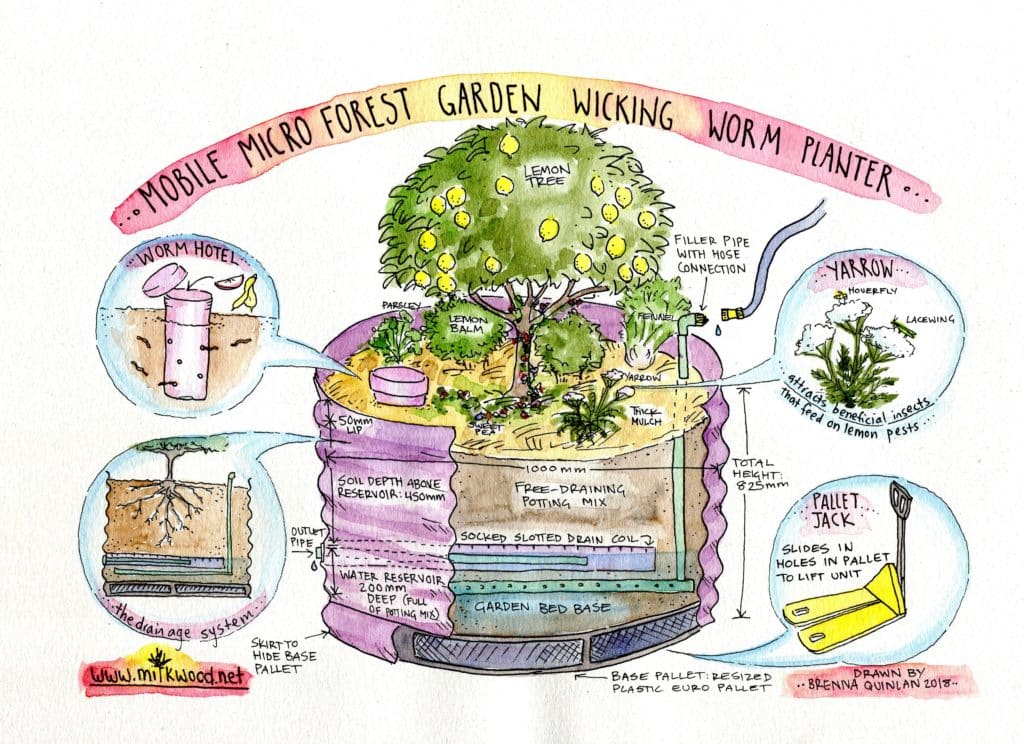I guess the first idea of the wicking bed is saving water by not wetting the surface. For this, it has a filling pipe. And a filling pipe is easy to install next to a grounded tree. But you can get a similar result just by digging a small shallow hole, not thicker than your hand, and watering through it. Well, the top of the hole will be wet after watering, but nothing else in the surface. That will create a water plume under the hole, good for the trees, bad for the weeds.
The second idea is holding water in the reservoir that doesn't rot. Having a bucket could be a solution. But there's a serious issue with rotting. In the wicking bed, rotting is prevented by having a geotextile layer that prevents any organic matter going into the reservoir, and a drainage is set under the growing soil to prevent water saturation inside the actual bed. I wouldn't rely in this solution for a long term tree. We have to consider that the tree will send roots to whatever structure we have there, looking for water, and tree roots can break so many things.
So, I'd rather have a column of humus, enveloped by compacted clay (but not so compacted that it can't drain), as if it was a pot filled with potting soil. If your soil is not clayey and you need to apply it, then I suppose it needs to be wet so it sticks to the sides of the hole. The clay will hold the water next we irrigate the tree, giving it time for the humus to absorb it, but not so much that it rots. Since the clay layer is not waterproof, the water inside the column will not be saturated so long that it could cause rotting problems, but it will retain moisture for longer.
Eventually, the roots or the bugs will break the 'pot', but by then you wouldn't have to worry.
EDIT:
Here are some people trying something like this, they call it deep irrigation, and use coarse sand instead of hummus.
https://www.orchardofflavours.com/deep-irrigation-for-clay-soils




 3
3







 1
1




 3
3




 3
3




 3
3




 1
1




 2
2







